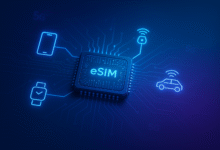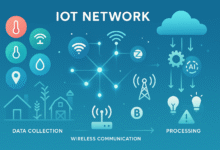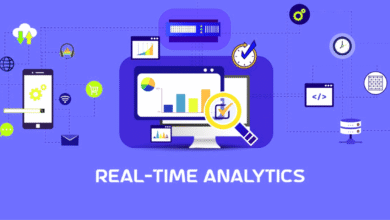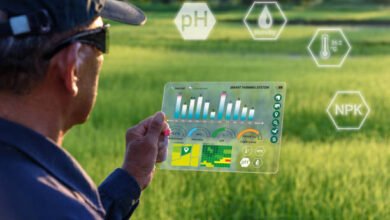Cloud Based Autonomous Driving: Revolutionizing the Future of Transportation
In this article, we will explore how cloud-based autonomous driving works, its key benefits and applications, and the challenges it faces.

The automotive industry is experiencing a paradigm shift, transitioning from traditional driving methods to intelligent, self-governing vehicles. One of the most transformative innovations powering this evolution is cloud-based autonomous driving. By integrating cloud computing with autonomous vehicle technology, manufacturers and tech companies are unlocking new levels of safety, scalability, and intelligence in transportation.
In this article, we will explore how cloud-based autonomous driving works, its key benefits and applications, and the challenges it faces. We’ll also touch on the technologies that support this ecosystem and the potential it holds for the future of smart mobility.
What Is Cloud-Based Autonomous Driving?
Cloud-based autonomous driving refers to the use of cloud computing infrastructure to manage, process, and analyze the massive volumes of data generated by self-driving vehicles. Unlike traditional autonomous systems that rely heavily on on-board computing, cloud-based systems offload much of the data processing to powerful remote servers.
This enables vehicles to access real-time data, learn from collective driving experiences, and improve decision-making processes. Through constant connectivity, cloud-based autonomous driving ensures that vehicles are updated with the latest software, maps, traffic conditions, and artificial intelligence (AI) models.
Key Technologies Involved:
- Cloud Computing Platforms (e.g., AWS, Microsoft Azure, Google Cloud)
- Edge Computing for low-latency data processing
- Artificial Intelligence and Machine Learning
- 5G and V2X Communication (Vehicle-to-Everything)
- Big Data Analytics
- IoT (Internet of Things) sensors and devices
The Importance of Cloud Computing in Autonomous Vehicles
Autonomous vehicles rely on a combination of sensors, cameras, radar, and LiDAR to perceive their surroundings. However, making real-time decisions based solely on in-vehicle processing can be limited by hardware constraints. This is where the cloud-based autonomous driving model becomes essential.
Cloud computing provides:
1. Scalable Data Processing
Every autonomous vehicle generates terabytes of data daily. Processing this volume of data onboard is neither practical nor cost-effective. Cloud platforms offer scalable resources to handle complex data analytics and deep learning models.
2. Real-Time Decision Making
With the rise of 5G technology, cloud-based platforms can transmit and receive data with minimal latency. This real-time communication enables vehicles to make faster, safer driving decisions.
3. Continuous Learning and Updates
Machine learning models improve with more data. Through cloud infrastructure, these models can be continuously trained with data from millions of vehicles, leading to more intelligent and adaptive autonomous systems.
4. Centralized Management
Fleet operators can manage multiple autonomous vehicles from a central hub, monitor performance, update software, and track vehicles in real time.
Benefits of Cloud Based Autonomous Driving
Enhanced Safety
Cloud systems provide access to vast datasets that help autonomous vehicles recognize rare or hazardous scenarios. Real-time data sharing across vehicles reduces the chances of accidents and improves road safety.
Improved Efficiency
From dynamic route planning to energy optimization, cloud platforms allow vehicles to perform efficiently. Real-time traffic data and weather conditions can be integrated into the vehicle’s decision-making processes.
Cost Reduction
By moving heavy computing tasks to the cloud, manufacturers can reduce the cost of high-end hardware inside vehicles. This makes autonomous technology more affordable and accessible.
Scalability
Cloud-based autonomous driving systems are easily scalable. Whether managing 10 or 10,000 vehicles, the infrastructure can adapt without requiring massive investments in physical hardware.
Collaboration and Data Sharing
Data collected from a network of vehicles can be aggregated in the cloud, allowing manufacturers and researchers to analyze performance, identify issues, and collaborate on solutions.
Real-World Applications
Autonomous Taxis and Ride-Sharing
Companies like Waymo, Cruise, and Baidu are leveraging cloud-based autonomous driving to operate fleets of self-driving taxis. These vehicles constantly exchange information with the cloud to optimize routes and ensure safety.
Smart Logistics and Delivery
Logistics companies are integrating cloud platforms into autonomous delivery vans and drones. Real-time traffic updates and delivery schedules are synced through the cloud for timely and efficient operations.
Public Transportation
City buses and shuttles equipped with autonomous driving systems are being managed via cloud-based platforms. This allows for real-time tracking, dynamic scheduling, and reduced operational costs.
Autonomous Farming Equipment
Agricultural companies use autonomous tractors and harvesters that communicate through cloud systems to optimize farming operations, reduce labor costs, and improve yields.
Key Players in Cloud Based Autonomous Driving
Several tech giants and automotive manufacturers are investing heavily in this space:
- Tesla uses cloud computing for data aggregation and over-the-air software updates.
- Google’s Waymo relies on Google Cloud for simulation and data processing.
- Amazon Web Services (AWS) provides cloud infrastructure for companies developing autonomous vehicle technology.
- Microsoft Azure collaborates with automakers like Volkswagen and Cruise to provide scalable cloud services.
- NVIDIA offers AI-powered cloud solutions for autonomous vehicle training and inference.
Challenges and Considerations
While the advantages are significant, cloud-based autonomous driving also faces notable challenges:
Latency and Network Reliability
Even with 5G, network coverage is not universally consistent. Vehicles in remote or poorly connected areas may experience delays in data transmission.
Data Security and Privacy
Autonomous vehicles collect sensitive data about passengers and surroundings. Ensuring this data is securely transmitted and stored is crucial.
Legal and Regulatory Hurdles
Global regulations around data sharing, cloud computing, and autonomous driving vary significantly. Navigating these regulations is a challenge for international scalability.
High Initial Investment
Setting up the cloud infrastructure and maintaining real-time connectivity involves significant upfront costs, especially for startups.
The Role of Edge Computing
To mitigate some challenges of latency and connectivity, edge computing plays a complementary role. In this model, certain data is processed closer to the vehicle (on “the edge”), reducing the dependency on cloud-based resources for time-critical decisions.
Edge computing works alongside the cloud, offering a hybrid approach. Less urgent tasks, like long-term learning and large-scale data analysis, are handled in the cloud. In contrast, immediate tasks such as obstacle detection or braking are managed locally.
Future Outlook of Cloud Based Autonomous Driving
The integration of AI, IoT, 5G, and big data into cloud-based autonomous driving systems is setting the stage for a fully connected transportation ecosystem. In the near future, we can expect
- Fully Autonomous Urban Mobility: Driverless taxis and buses becoming mainstream in metropolitan areas.
- Autonomous Fleets for Businesses: Logistics and delivery companies relying entirely on cloud-connected autonomous vehicles.
- Interconnected Smart Cities: Vehicles communicating with traffic lights, road infrastructure, and other vehicles to optimize urban traffic flow.
As advancements in technology continue and regulatory frameworks mature, the shift towards cloud-based autonomous driving will accelerate, making transportation safer, smarter, and more sustainable.
Conclusion
Cloud-based autonomous driving is not just a technological advancement; it is a transformative force reshaping the way we think about mobility. By leveraging the power of cloud computing, autonomous vehicles can process vast amounts of data, learn continuously, and operate more safely and efficiently than ever before.
With continued innovation and collaboration among technology providers, automakers, and regulatory bodies, the dream of fully autonomous, cloud-connected transportation is quickly becoming a reality. The future of mobility is not only autonomous but also inherently cloud-based.











